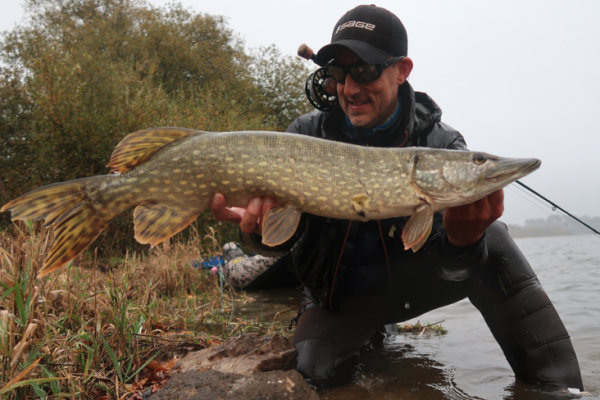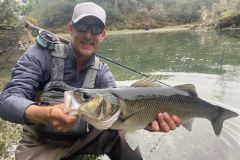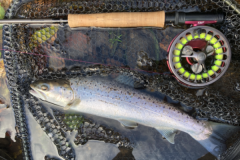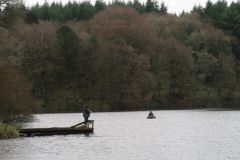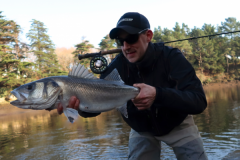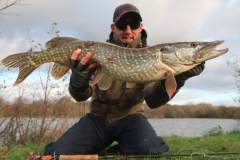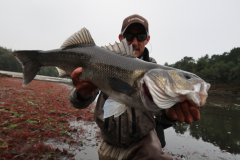In addition to flies, it's important to use them wisely, i.e. according to the conditions, but also with the appropriate lines for the positions and depths where the pike are found.
1-Imitation pole
Perch are easy prey to find and often cohabit with pike, whether in lakes or second-category rivers.
They are therefore an integral and non-negligible part of the pike's diet.
That's why it's a good idea to always have some with you, and use them regularly throughout the season.
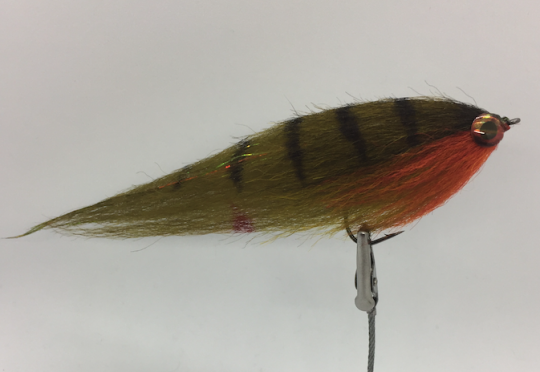
2- RH or Red head
This fly, also called Marlboro because of its color, is unrivalled for triggering pike. It's one of the flies I use most often at the start of a fishing trip or when nothing else works. It can be rigged in a variety of ways. Here, I use nayat and bucktail. The basic materials for pike flies. A wide head moves water and creates numerous vibrations that are picked up by the lateral line and sensory pores of our freshwater carnivore.
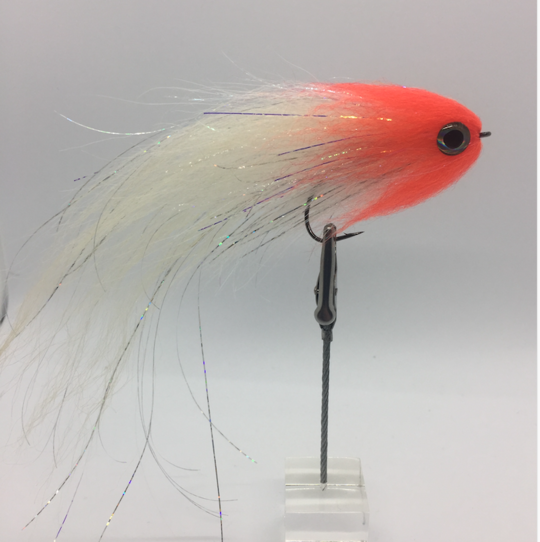
3-Wiggle tail
Tails are appendages that can be added to our rigs. Introduced over the last ten years or so, they can be used to create larger flies, generate lure-like vibrations (like a twist or grub) and provide a plus in approach for the fly fisher. They are becoming increasingly common in the rigs of pike aficionados.
These cues come in a variety of colors and shapes, offering endless possibilities.
On the downside, they are more difficult to cast. I generally use a 9 or even 10 line in this case.
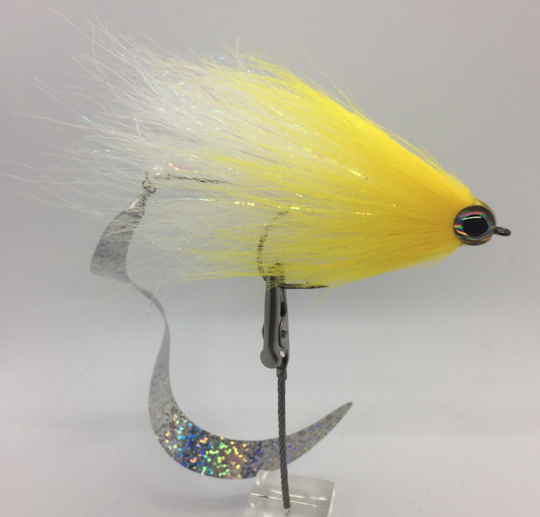
4- Bufford Pink/yellow
Buffords are bucktail flies invented by various American fly-tyers, including Bob Popovic, for both northern pike and musky.
The massive deer-hair head has the advantage of generating strong vibrations and allowing the fly to move out of alignment on pulls and releases.
I'm using them more and more and love their light, erratic swimming action, but also the water they displace, which attracts pike from afar.
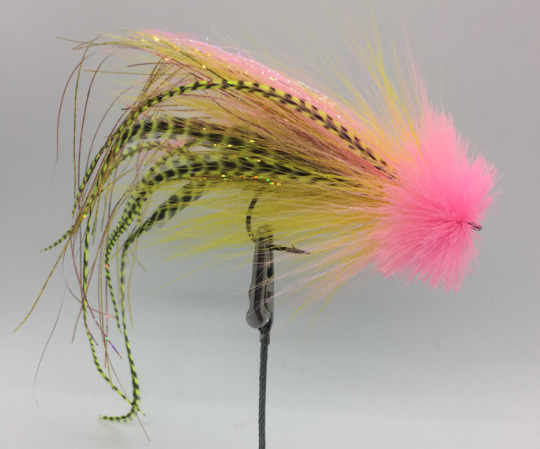
5- Bait fish chartreux
Chartreux is a color that works very well in cold and/or tinted water.
They are generally UV, so fish can see them from a distance, even in low light.
This so-called "holo" (inverted bucktail) set-up creates a large, voluminous predator dubbing head which, once again, displaces a lot of water and therefore creates big vibrations while being able to offset the fly's swimming action, which pike love.
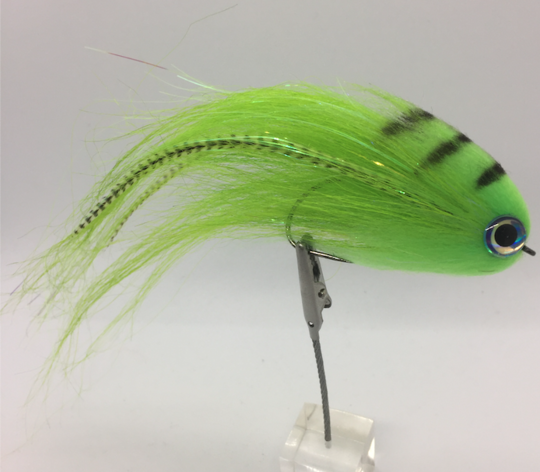
Happy mounting and the end of the pike season to you!

 /
/ 